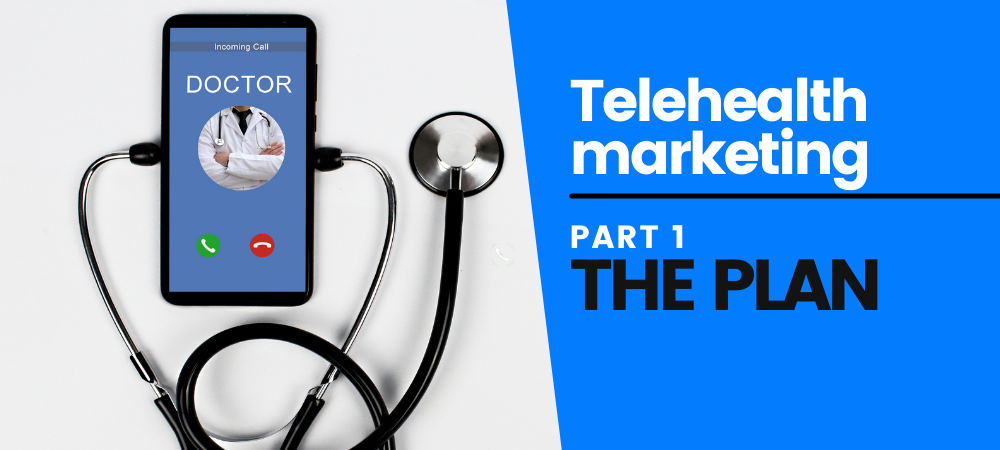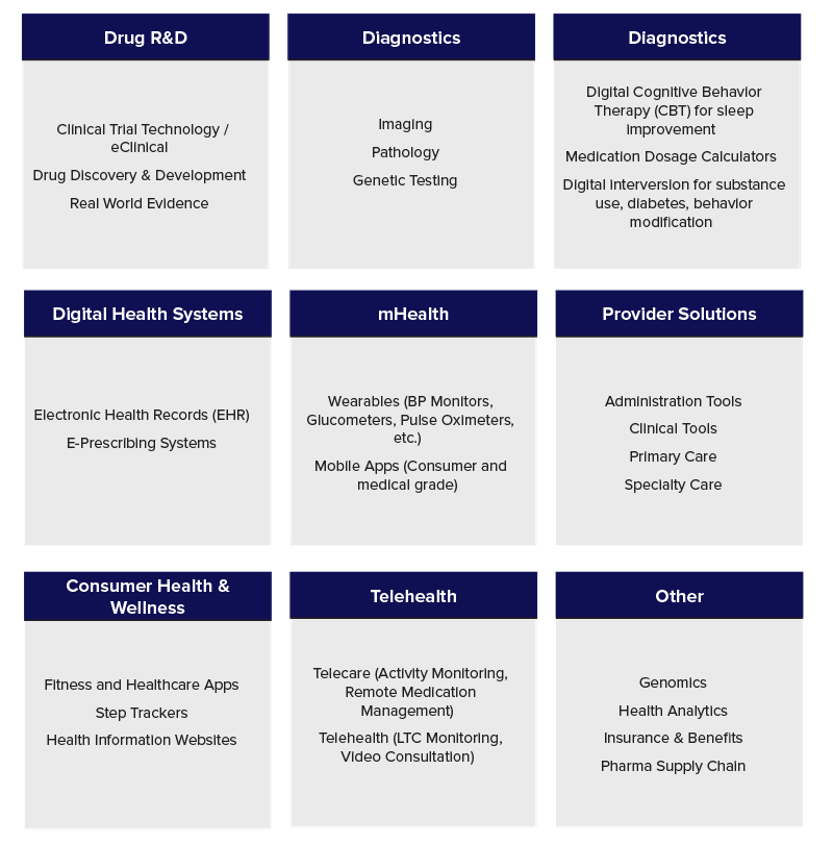
Welcome to the telehealth crossroads.
Ready or not, the COVID climate has ushered in the advent of digital medicine, born out of lockdown and raised in the age of post-pandemic uncertainty.
With 46% of 2020 patients pointing to safety as the chief reasoning behind their migration to telehealth services, it’s likely digital healthcare—from video visits to electronic record keeping—will continue to attract patients amid the post-COVID era.
Yet wide-scale telehealth adoption is still relatively new. Indeed, it took the arrival of the 2019 pandemic to transform the current playing field and pave the way for legal and insurance waivers, allowing clinics to bring telemedicine to the masses.
It’s only natural healthcare providers will face challenges in expanding their practices. Limited access to digital devices can present obvious roadblocks, as can genuine concerns regarding information security.
Still, the benefits of telemedicine are hard to ignore, as they can offer:
- Expanded patient demographics
- Budget streamlining
- Improved operations and faster response times
- Extended opportunities for specialist referrals/consultations
If, like many healthcare practitioners, you’ve decided avoiding the digital medicine trend is simply not an option, it’s time to start advocating for the telehealth cause.
Loudly.
And, above all, strategically.
It all starts with a plan. As with any marketing endeavor, the promotion and expansion of telehealth services will require a detailed blueprint in order to get off the ground.
Unfortunately, there’s no hard-and-fast template, as plans will differ dramatically depending on a variety of factors, including location, size of the organization, and areas of expertise.
But there are some universal best practices to consider.
If your healthcare organization finds itself on the precipice of digitized medical outreach and wants to develop a bona fide telehealth marketing plan, we’ve simplified the process by creating a list of definitive “to-dos” to get started.
1. Think scope
Before you jump headlong into the telehealth deep end: STOP. Don’t get ahead of yourself.
Your first move should be to think about the scope of your entire telemedicine enterprise. As in:
- Which telehealth modules does your practice provide or plan to provide in the future? (Diagnostics? E-prescribing? Fitness tracking? Mental health?)
- How many patients do you hope to treat via telehealth services?
- How extensive do you want your marketing efforts to be?
- Will you have a dedicated marketing team?
- How many hours/dollars per week can be allotted for marketing projects?
These are important considerations because, as we’ve said, telehealth programs vary. Your marketing plan will need to accurately reflect your target audience, the scale of your organization, and the innovative growth you’d like to achieve.
Are you unsure how to determine your particular scale? Start by defining what “telehealth” really means to your clinic. Is it a basic onboarding of digital records? A COVID-friendly option for remote checkups? A multi-level strategy involving integrated data systems, video consultations, and prescription management?
The answers to such questions will give you a more concrete understanding of what your telehealth marketing plan should cover (and to what extent).
2. Define your success
No marketing plan can be effective without a set of measurable objectives—documented and agreed upon ahead of time. (You can’t know how well you’re doing if you don’t know what it is you want to gain.)
As such, your telehealth marketing program should come standard with a list of ideal outcomes. These can help guide and shape your efforts along the way, enabling you to maintain focus and allocate your time and energies appropriately. They’ll also provide your organization with a clear and comprehensible rubric for assessing your telehealth ROI.
Bear in mind, though, your objectives should always be twofold: they should support the growth of both your practice and your business.
When mapping out your telehealth marketing goals, be sure to consider these dual components, as their corresponding metrics for success are bound to look different.
Your marketing goals should support growth for both business and practice.
Here are some tangible objectives for each:
Clinical/Operational
- Improved patient telehealth satisfaction rates
- A rise in telehealth certifications among staff
- A demonstrable reduction in wait times or in time spent filling out forms
- An increased number of onboarded telehealth solutions
- Marked expansion of your digital records archive
Business/Financial
- Higher lead-to-patient conversions
- An increase in word-of-mouth referrals
- Improved website traffic levels
- Increased ROI overall
- Enhanced engagement with marketing content (emails, newsletters, text blasts, etc.)
As you fine-tune your list of objectives, be as specific as possible. For example: A simple “increase in telehealth visits” isn’t as actionable a goal as “40 new telehealth appointments per month.”
Which brings us to yet another critical point:
Always provide a timetable.
Each of your marketing aims should have a specified time frame. This will make progress easier to evaluate (and present) and will also help break-down your marketing program into more digestible assignments.
3. Know who you’re talking to
If you happen to be a seasoned marketer, you’ll be ahead of us here. If not, you can probably guess where we’re headed:
No matter the goals you’ve set, you’ll need a targeted audience to actually listen to you if you want to make any headway.
But as veteran marketers will tell you, an audience is a complex organism: it contains various subsets of people, each with different hopes, dreams, objectives, backgrounds, and health histories all their own.
Your job is to get to know these people. All of them.
Begin by reviewing your practice and carefully considering who your telehealth services are designed to help. Do you primarily serve child patients? Retirees? Candidates for behavioral health? Walk-ins? Doctors and staff experiencing pandemic burnout?
Note there will be more than one answer. If the list gets too long, try narrowing it down to a core group of desirable audience members (and set aside the rest for phase two of your marketing campaign).
Once you’ve identified your core audience, it’s time for some serious homework.
Use your patient archives and the power of almighty analytics [more on this in future installments] to research the many disparate “segments” of your audience. These segments can be categorized by demographic markers such as age or location and/or separated according to labels directly relevant to your practice (like “diabetic patients,” “patients recovering from surgery,” “cancer survivors,” “off-site specialists,” or any other designation that might prove useful).
Next, leverage your research findings to uncover (for each segment):
- Long-term physical or mental health goals
- Ongoing medical/professional challenges
- Benefits your telehealth services can offer to help combat these challenges/achieve these goals
- Any budget or logistical issues standing in the way of telehealth adoption
- Preferred methods of information transfer (is the segment attracted to visual media? written? social?)
- Other signature traits (to further inform your messaging)
From here, sketch an outline of each segment’s “journey,” i.e., the basic steps they’ll have to move through to get from “vaguely aware of telehealth” to “full-on telehealth adopter.” A cursory outline might look like this:
Step 1: Awareness
For new patients, this usually translates as a general interest in what telehealth is all about. For doctors, administrators, and staff, this may be the early investigative stage for onboarding telehealth solutions.
Step 2: Consideration
The point at which patients or providers begin actively researching telehealth options by reading in-depth educational materials, watching explanatory videos, etc.
Step 3: Booking/Decision
The moment the deal is sealed, and patients/providers opt to utilize telehealth services with an eye toward the long term.
As you go forward, remember your marketing will have to adapt to specific stages of the patient journey(s) at specific times. Keep these three steps front of mind to avoid sending the wrong message… or, worse, sending the right message at the wrong juncture.
It’s best to first get a sense of where your audience is so you can gauge how hard or soft a push you’ll need to make. A patient who’s still on the fence about telemedicine won’t really benefit from a detailed service price list, after all.
4. Hone your message
-Stewart Gandolf, CEO, Healthcare Success
“The challenge is to positively differentiate your services, and communicate your leadership position, to the critical target audiences.”
As multifaceted as your marketing outreach can (and should) be, the strength of your campaign—and the development of your brand—will depend on its consistency.
In other words: Your messaging will have to demonstrate variety and uniformity at the same time.
Confused? Don’t be. All this means is that, while your methods, media, and individual messaging may change, your underlying intention and tone of voice should remain constant.
The strength of your campaign depends on its consistency.
Before you launch your marketing plan, be 100% certain your teammates are on the same page regarding:
- The theme of your telehealth services. What exactly does your practice offer your prospective telehealth patients/users? What makes your program unique?
- The value you represent. What advantages can your services provide? Are they centered around safety? Finance? Convenience?
- The voice that best suits your telehealth solution. What characteristics do you most want to convey? Friendliness? Attentiveness? Reliability? Knowledgeability?
Your theme, value, and voice should all be evident in every pitch you make, every personalized email you write, and every form of communication you put out there. Consistency and continuity will help establish cohesion and solidify your sense of purpose—all of which will position your telehealth practice as a trustworthy source of medical treatment and advice.
5. Gather your resources
The last crucial step before embarking on your campaign will be to get your proverbial ducks in a row.
As you close-in on launch day, itemize exactly what you’ll need to make your detailed plan a reality. Ask yourself:
“Who’ll be on my team?”
Does your healthcare system already have a marketing department you can deploy? If not, can you manage with just yourself and a few contractors? Or would a digital marketing partner be required?
“What sort of budget will I be working with?”
Realistically, what will you need to get the job done well?
“What tools should I use?”
Will you require a centralized database? Automation software? A HIPAA-compliant customer relationship management (CRM) solution? A physical office?
“How can I maintain compliance?”
Will you need to hire legal counsel? A HIPAA-compliance officer? What solutions will help align your efforts to your organization’s code of ethics?
“What media will work best?”
Will your marketing rely on digital platforms like Instagram or Facebook? Will video play a role? Will you need extra printed collateral to attract less tech-savvy patients/staff?
Whatever your answer to the last question, it’s worth remembering the one thing you cannot go without is a website.
What does a telehealth website entail? The answers are soon to come in part two of our telehealth marketing series.
This is the first of a 5-part series. You can read the others here:
- Why You Need a Telehealth Marketing Plan
- Why Your Telehealth Website Has to Be Amazing (and How to Get It That Way)
- Inbound Marketing Strategies for Telehealth Practices
- Outbound Marketing Strategies for Telehealth Practices
- The Telehealth Tools You Need to Power Effective Growth Marketing








